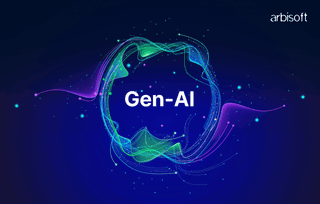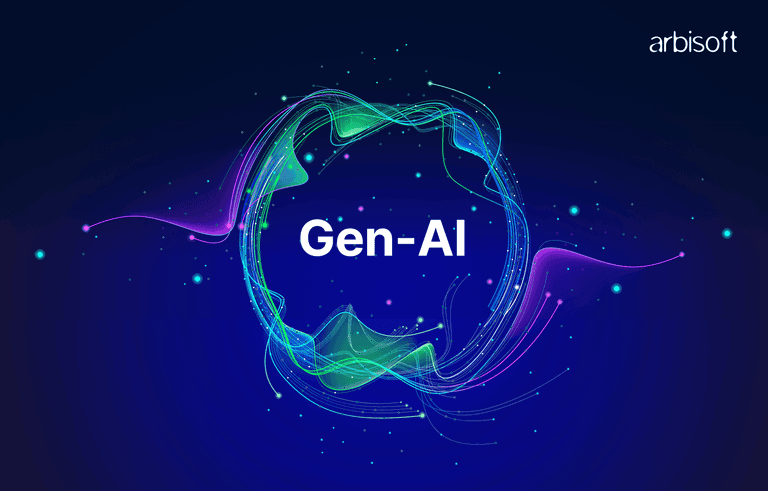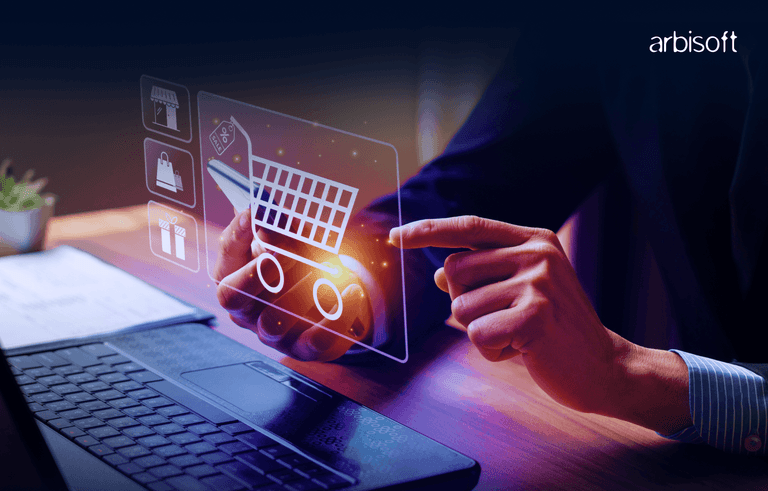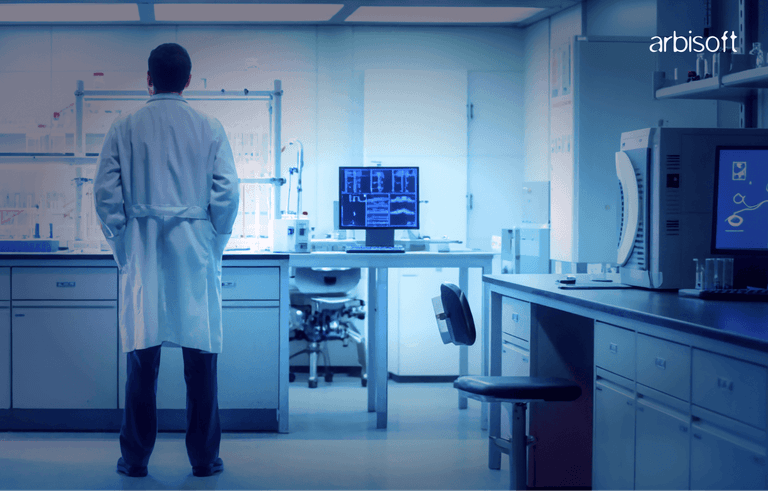We put excellence, value and quality above all - and it shows




A Technology Partnership That Goes Beyond Code

“Arbisoft has been my most trusted technology partner for now over 15 years. Arbisoft has very unique methods of recruiting and training, and the results demonstrate that. They have great teams, great positive attitudes and great communication.”
Google Introduces its 7th Generation AI Accelerator TPU Chip - Ironwood

The AI race just hit a new gear. At its 2025 Cloud Next conference, Google unveiled Ironwood, its 7th-generation Tensor Processing Unit (TPU), designed to tackle one of AI’s biggest bottlenecks - efficiently running advanced models at scale.
“At a time when available power is one of the constraints for delivering AI capabilities, we deliver significantly more capacity per watt for customer workloads,” - Google VP Engineering, Vahdat explained.
You thought Google took a break after its Firebase Studio launch? Think Again!
Forget generic chips—Ironwood is built for inference, the process where trained AI models generate real-world responses. Let’s break down why this launch is a game-changer.
Why Inference Is the New Battleground
Training AI models grabs headlines, but inference is where the real action happens. Think of it like this:
Training = Teaching a student (one-time cost).
Inference = Deploying that student to solve problems daily (ongoing cost).
With global AI inference workloads projected to grow 12x faster than training by 2026 (Deloitte), efficiency here is critical. Google’s pivot to inference-optimized hardware reflects a market shift - businesses now prioritize cost-effective, scalable AI deployment and solutions over merely building bigger models.
Ironwood TPU Benchmarks
Google’s claims are bold, but the specs back them up!
- 42.5 exaflops of AI compute at full scale (9,216-chip cluster) – 24x faster than today’s top supercomputer (El Capitan’s 1.7 exaflops).
- 4,614 teraflops/chip – for reference, it is enough to process 50,000 high-resolution video inferences per second. Give that a minute to sink in!
- 192GB HBM memory/chip (6x more than 2024’s Trillium TPU) with 7.2 terabits/sec bandwidth – Crucial for complex models like Gemini 2.5.
- 2x better performance/watt vs. Trillium, 30x vs. 2018 TPUs – A lifeline for power-strapped data centers.
TPU vs GPU - What’s the Difference?
Google’s TPUs and traditional GPUs both accelerate AI workloads but serve different needs. TPUs are specialized chips built exclusively for AI tasks like training and inference. They offer faster speeds, lower costs (~30% cheaper), and better energy efficiency (35% less power).
GPUs, while slower for pure AI work, are versatile—handling gaming, graphics, and AI—and widely available across cloud platforms. TPUs thrive in large-scale, Google-centric environments, while GPUs suit smaller projects or mixed workloads.
Factor | Google TPU | GPU |
| Design Purpose | Built only for AI/ML tasks. | General-purpose (graphics, gaming, AI). |
| Performance | Faster for large-scale AI (e.g., trains models in hours vs. days). | Slower for pure AI but handles diverse tasks. |
| Cost Efficiency | ~30% cheaper for AI workloads. | Higher cost for equivalent AI performance. |
| Power Use | 35% more energy-efficient than GPUs. | Higher energy consumption for AI tasks. |
| Availability | Only via Google Cloud. | Widely available (AWS, Azure, NVIDIA, etc.). |
| Flexibility | Optimized for TensorFlow/PyTorch. | Supports multiple frameworks (CUDA, OpenCL). |
| Best For | Large-scale inference, energy-sensitive projects. | Prototyping, mixed workloads, non-AI tasks. |
What Ironwood Means for Businesses
With all the good talk and fancy numbers, it all comes down to functionality. Let’s see what Ironwood claims to bring to the running market.
1. Costs Drop, Scalability Soars
Running AI like Gemini 2.5 Pro (used for drug discovery, financial modeling) could cost 40% less on Ironwood vs. GPUs, per Google’s benchmarks. For context, - Training GPT-5 reportedly costs ~$500 million.
2. Real-Time Reasoning Goes Mainstream
Ironwood’s SparseCore accelerator handles “advanced ranking” tasks (e.g., personalized recommendations) 10x faster than previous TPUs. This can enable:
- E-commerce sites predict trends in milliseconds.
- Healthcare models analyzing patient data mid-surgery.
3. Sustainability Meets ROI
Data centers guzzle ~1.5% of global electricity (IEA). Ironwood’s efficiency can let companies:
- Cut energy bills by 35% for AI workloads.
- Reduce carbon footprints while scaling AI.
Google’s Full-Stack Advantage
Ironwood isn’t standalone. Google’s integrating it with:
- AI Hypercomputer - Connects thousands of TPUs for seamless scaling.
- Cloud WAN - Boosts network speeds by 40%, slashing latency for global deployments.
- Agent Interoperability (A2A) - Lets AI agents from Salesforce, SAP, etc., collaborate – a first in the industry.
Vahdat Added,
“Cloud WAN is a fully managed, viable and secure enterprise networking backbone that provides up to 40% improved network performance, while also reducing total cost of ownership by that same 40%.”
This vertical stack gives Google an edge over AWS (Inferentia/Trainium) and Azure (Maia 100), which rely more on partnerships.
Parting Thoughts
Ironwood isn’t just another chip—it’s Google’s bet on an AI-driven future where speed, scale, and sustainability coexist. For businesses, this means:
- Cheaper access to cutting-edge AI.
- Ability to deploy complex models (e.g., multi-agent systems) without infrastructure headaches.
- A clear path to ROI in an era where 60% of AI projects stall in pilot (Gartner).
As Google Cloud CEO Thomas Kurian put it:
“Ironwood lets enterprises stop worrying about how to run AI and focus on what to build.”
The AI hardware wars are heating up, but Google’s decade-long TPU journey positions Ironwood as a frontrunner. For developers and enterprises, this isn’t just about faster chips—it’s about reaching AI’s full potential without breaking the bank or the planet.
Ironwood launches later this year on Google Cloud. Ready to rethink your AI strategy?
What People are Asking About Google’s Ironwood TPU?
What is Google TPU used for?
Google’s Tensor Processing Units (TPUs) are custom chips designed to accelerate AI and machine learning workloads. They excel at tasks like training massive AI models (e.g., Gemini or PaLM) and running inference (deploying models for real-time tasks like chatbots or image recognition). TPUs are optimized for matrix math, making them ideal for AI research, scientific simulations (like protein folding with AlphaFold), and large-scale data processing.
Is Google TPU free?
TPUs aren’t free for commercial use, but developers can access them at no cost for small projects via Google Colab’s free tier (with usage limits). For serious workloads, Google Cloud charges hourly rates starting around $2.50/hour for basic configurations. Enterprises pay more for dedicated clusters, but Google claims TPUs are 30% cheaper than GPUs for equivalent AI performance.
Is Google TPU for sale?
You can’t buy physical TPU chips. Instead, Google offers them as a cloud service. Users rent access through Google Cloud, choosing between shared “slices” (for smaller projects) or full “pods” (dedicated hardware clusters). This “hardware-as-a-service” model ensures businesses only pay for what they use.
Who uses Google TPUs?
Google relies on TPUs internally for services like Search, YouTube, and Gemini. External users include enterprises (e.g., Spotify for recommendations, Airbus for simulations), researchers (CERN, NASA), and startups needing scalable AI power. Over 60% of Fortune 500 companies using Google Cloud use TPUs for AI projects.
What is Ironwood TPU?
Launched in 2025, Ironwood is Google’s 7th-gen TPU, optimized for high-speed AI inference. It delivers 42.5 exaflops of power at full scale (24x faster than today’s top supercomputer) and uses 192GB of memory per chip to handle complex models like Gemini 2.5. Its energy efficiency (2x better than 2024’s TPUs) makes it ideal for real-time tasks like medical diagnostics or fraud detection.
What is TPU vs GPU?
TPUs are specialized for AI, offering faster, cheaper performance for training and running models compared to GPUs, which are versatile (used for gaming, graphics, and AI). For example, training a model on TPUs might take hours vs days on GPUs. However, GPUs are widely available (AWS, Azure), while TPUs are exclusive to Google Cloud. TPUs also consume 35% less power, appealing to sustainability-focused businesses.
























